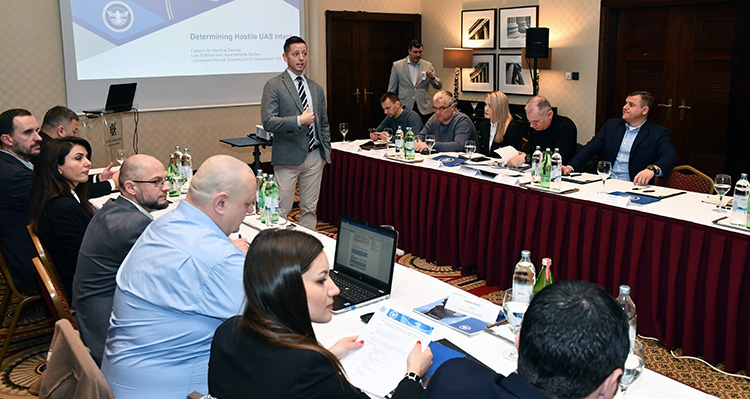The US Transportation Security Administration (TSA) recently took its drone security efforts to Zagreb, Croatia for a three-day training course for 28 aviation representatives from seven Eastern European countries. This was the first drone training outside the US led by TSA’s Law Enforcement/Federal Air Marshal Service (LE/FAMS) since the start of the Covid-19 pandemic.
“After several decades of conflict and economic turbulence, airports and air carriers in the region are growing in terms of flights and passenger loads,” said Steve Petrick, TSA representative, who is based at the US Embassy in Rome. “Unauthorized [drones] flying near airports can pose serious safety and security risks and cause disruptions and delays impacting airport operations.”
Petrick and Supervisory FAM Michael Caskey said that TSA’s goal, through this training and other initiatives, is to expand worldwide partnerships, enhance international terrorism prevention efforts and raise the global baseline of aviation security.
Unmanned aerial systems (UAS) are an increasing threat worldwide. “Airports across the globe continue to see an increase in UAS encounters surrounding their airports, posing a risk to commercial aviation and operations,” Caskey noted.
TSA has been working to increase protection against nefarious and unsafe drone use for some time already. In May 2021, TSA selected Miami International Airport for its initial test of technologies to detect, track and identify drones entering into restricted airspace. In August 2022, TSA selected Los Angeles International Airport as a second testbed for the program.
The course in Zagreb highlighted available planning, training and equipment and encouraged participants to develop UAS response plans, exercises and teams.
To aid and educate TSA’s Balkan stakeholders, Caskey said, “LE/FAMS and TSA’s international operations developed the training to address the importance of risk assessment, emergency procedures and incident reporting related to UAS encounters. We shared information on counter-drone technologies, detection methods and response strategies to mitigate risks.”
“Small UAS containing advanced aviation capabilities are easily available on the commercial market,” added transportation security specialist Gus Anderson. “These advanced technologies allow drones the ability to travel further and longer, creating a unique security challenge to commercial aviation.”
Petrick said this was the first of what he expects to be a series of regional trainings that TSA and The Department of Homeland Security will lead on aviation security in the Western Balkans under an upcoming project called Balkan Spirit 2.
For the latest news on drones, click here.

